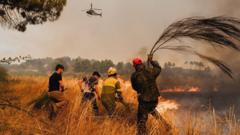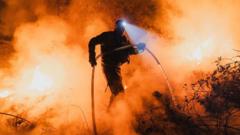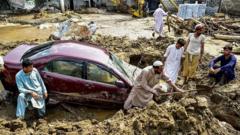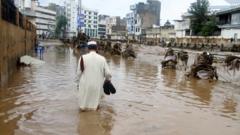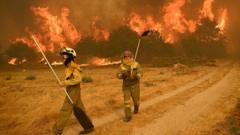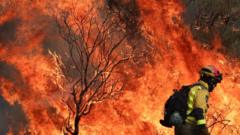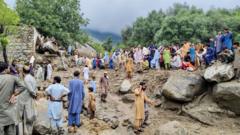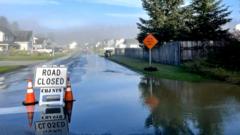The majestic Himalayas, once famed for their stunning views, are increasingly obscured by haze from severe air pollution. This change has not only disappointed locals and international tourists alike but has also impacted the trekking industry's viability, with significant decreases in business noted by operators and guides.
The Disappearing Majesty of the Himalayas: Air Pollution Takes a Toll
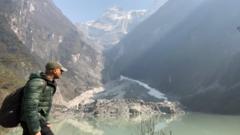
The Disappearing Majesty of the Himalayas: Air Pollution Takes a Toll
Increased air pollution is shrouding the iconic Himalayan peaks in haze, affecting tourism and visibility in the region.
Trekking in Nepal's former paradise for panoramic views is becoming a distant memory, as haze from escalating air pollution increasingly cloaks the Himalayas. Despite being one of the most picturesque regions on Earth, visitors to Kathmandu and its surrounding areas are finding it harder to capture fleeting glimpses of the majestic mountain range.
The increasingly severe air pollution affecting visibility has become especially concerning, with dense haze lingering over the region even during traditionally clear months like spring and autumn. My recent return to Kathmandu meant multiple flights circling the city's airport, as haze rendered visibility to a minimum. Upon arrival, I found that even viewpoints like the renowned Nagarkot offered little more than a view of the murky sky rather than transcendent mountain panoramas.
Yogendra Shakya, a hotelier at Nagarkot, expressed frustration over the changing landscape, explaining his decision to shift focus from mountain views to the region's rich history and culture in response to the diminishing visibility. “No sighting means no business,” lamented Lucky Chhetri, a trailblazing female trekking guide, noting a staggering 40% decrease in her business due to hazy conditions.
Scottish tourist John Carroll, with over a dozen visits to Nepal since 1986, echoed this sentiment, lamenting: “It wasn’t like this 10 years ago; the haze has become extraordinarily disappointing.” The Trekking Agents Association of Nepal has reported significant distress among operators, with many contemplating leaving the industry entirely.
Broader trends show that the issue of haze is not confined to Nepal. In India’s mountainous regions, tourism operators report denser haze returning earlier than in years past. Malika Virdi of a community-run business in Uttarakhand highlighted how longer dry spells, followed by brief downpours, leave behind persistent haze.
Even the western Himalayas in Pakistan, away from the urban sprawl, are experiencing increasingly frequent haze that interferes with visibility. Asif Shuja, former head of Pakistan's environmental protection agency, remarked that what were once easily visible mountain ranges are now veiled in this persistent smog.
The overarching problem stems from high levels of air pollution in urban centers across South Asia, affected by a mix of vehicular emissions, industrial waste, and agricultural practices. These elements, exacerbated by climate change, combine to trap warm air above cooler air, inhibiting vertical air movement and preventing pollutants from dispersing.
Dr. Someshwor Das from the South Asia Meteorological Association warned that with the frequency of hazy days on the rise, particularly in tourism-heavy regions, the Himalayan vista replete with alluring landscapes may soon be relegated to just photos and paintings.
With examples of deteriorating visibility becoming more common, companies and trekking guides face new challenges in demonstrating the awe-inspiring allure that has drawn visitors from around the globe. As the haze continues to settle ominously over the iconic peaks, there seems to be little that can be done to rectify the situation—leaving locals and tourists alike longing for clearer skies.




